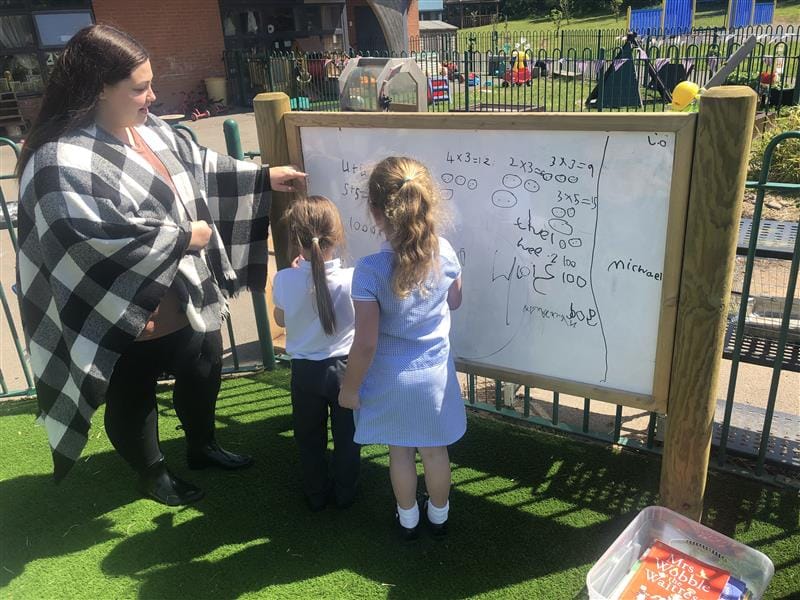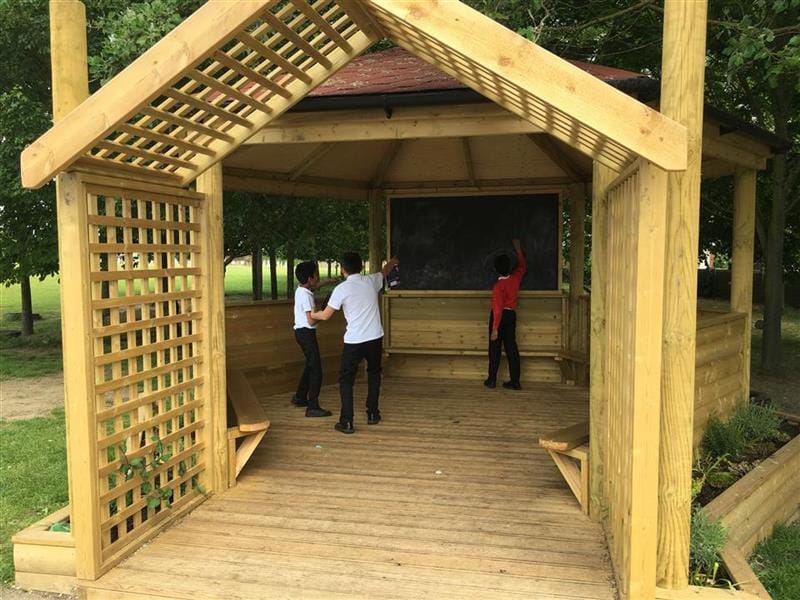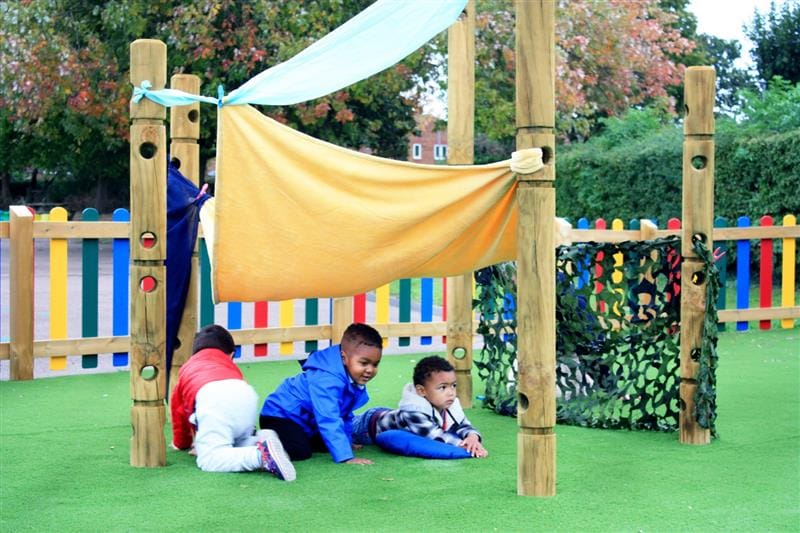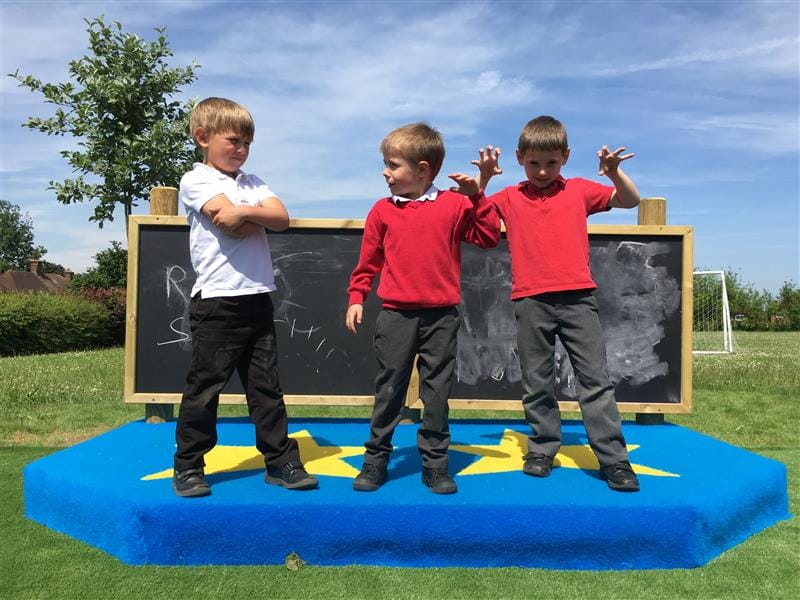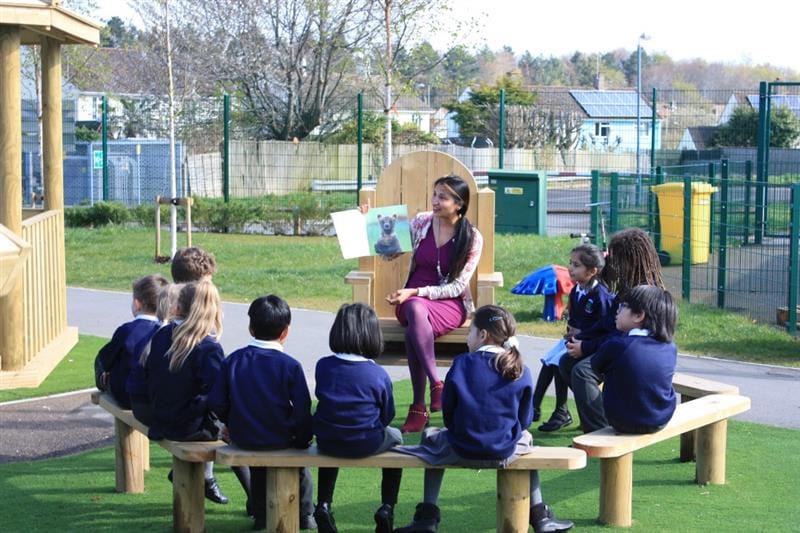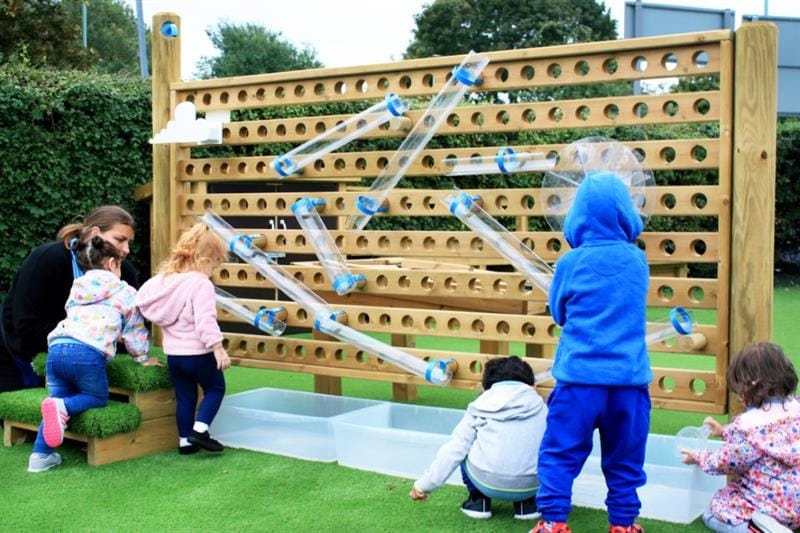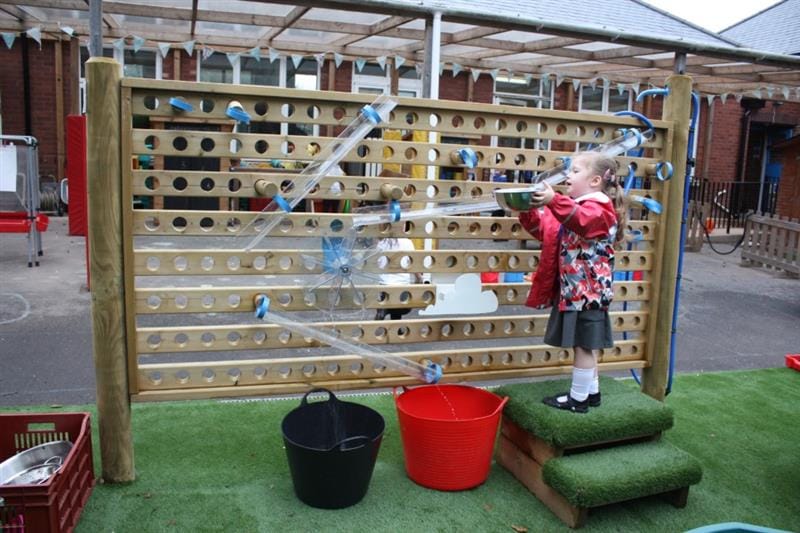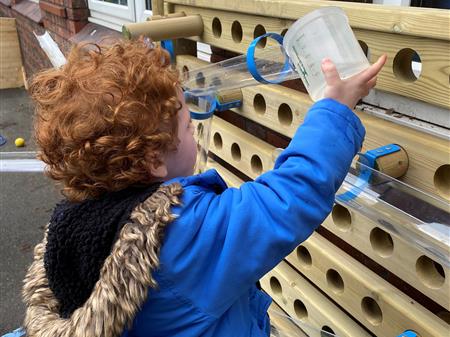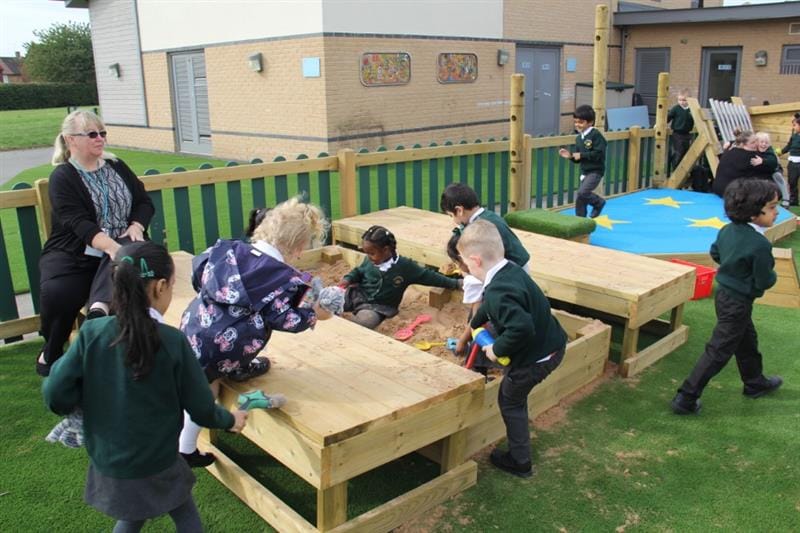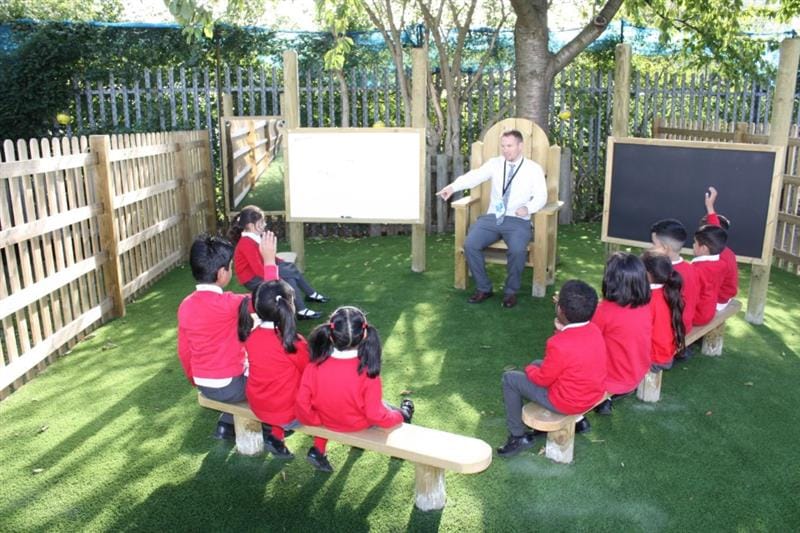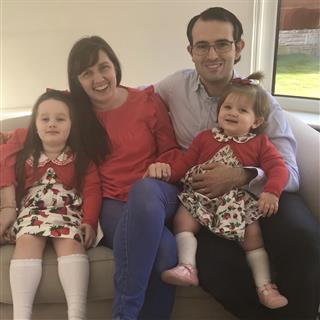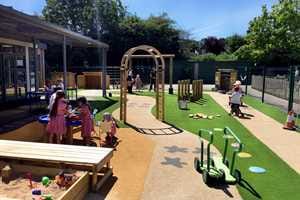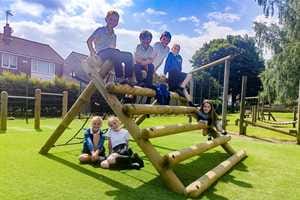
Lesson Ideas and Activities
Tackle the terrifying topic of phonics with this handy guide!
Making Phonics Fun
The term ‘phonics’ can create a feeling of panic amongst parents, causing them to feel overwhelmed. For some parents and grandparents, they will have been taught to read whole words through rote and memory based on visual characteristics.
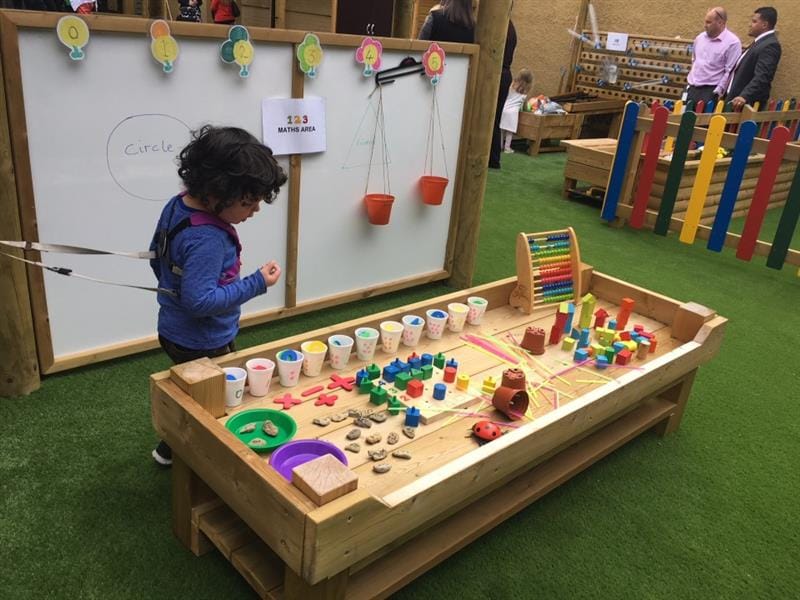
Put simply, ‘Phonics’ is a method of teaching children to read by breaking words down into individual letter sounds. Phonics looks at language as a code, by knowing the sounds of individual letters and how those letters sound when they are combined, children begin to decode as they read.
Having a secure understanding of phonics helps children to know which letters to use when spelling and writing.
What is 'Phonics?'
The Primary National Curriculum states that phonics should be emphasised in the early teaching of reading to beginners when they start school. A good phonic knowledge can make learning to read quicker and easier.
Children may become more confident if they have the tools to decode words and will develop a love of reading at an early age. Each of the 26 letters in the alphabet has its own sound which is different to how it is said in the alphabet.
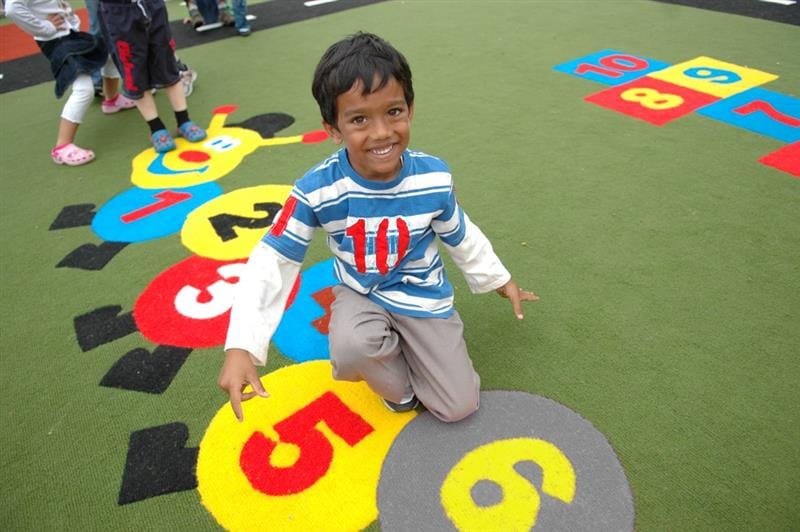
Phonics involves matching the sounds of spoken English with individual letters or groups of letters for example the sound k can be spelled as k, c, ck, or ch.
Synthetic phonics involves 44 sounds or phonemes as many sounds have more than one possible spelling. The first sounds children usually learn are s,a,t,p,i,n.
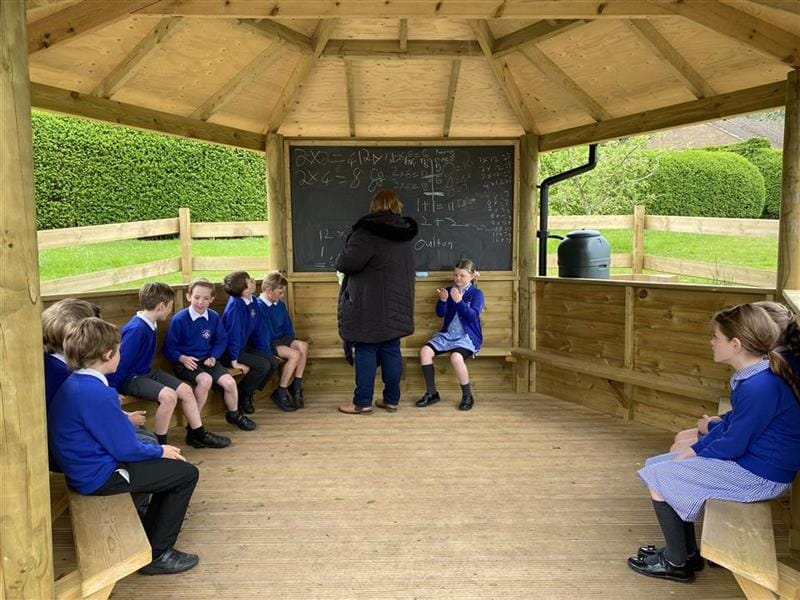
These are called phonemes as they are the smallest units of sound.
Children are taught these sounds first as they commonly occur in many words. These sounds can be put together to blend and segment simple CVC words (consonant/vowel/consonant) such as pan, cat, tap etc.
Why is phonic knowledge important for early reading?
Phonics teaches pupils to look at the letters of a word and segment it into its component sounds before blending these sounds back together to read the entire word.

When faced with the word ‘dog’ a pupil may point to each letter making the sound d then o then g. Once they have successfully segmented the individual sounds, they will blend them together to say the word – dog.
With practice, the speed at which children can segment and blend sounds rapidly increases.
Phonic knowledge cannot be relied upon to read all words in the English language. Sight words or high frequency words are commonly used in most texts.
Many of them are phonetically irregular and don’t follow conventional spelling rules. It is best to combine phonics teaching alongside learning sight words.
Pre-Phonics Skills
Prior to formal teaching of letters and sounds there are certain skills that children need to develop:
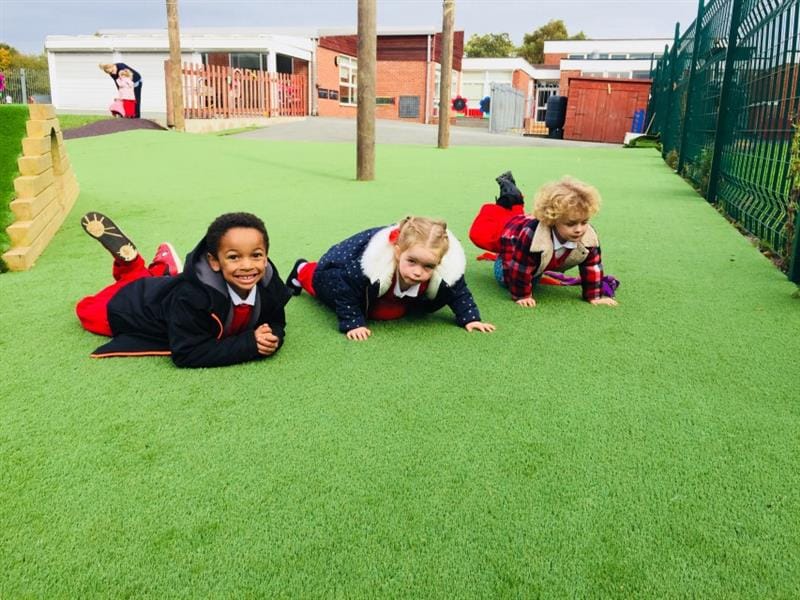
Listening skills are important so that children begin to listen to the sounds of speech. Children will enjoy a listening walk indoors or outdoors; they can use words and pictures to recall all the sounds they can remember.
Allowing children to make music outdoors using Pentagon’s range of outdoor instruments helps children to discover how different sounds are made and they may begin to experiment with the difference between loud/soft sounds.
Groups of children could perform short compositions for others to state what they liked about the piece.
Moving their bodies allows children to develop awareness of sounds and rhythms.
Actions songs such as Heads, Shoulders, Knees and Toes, Sleeping Bunnies and Wheels on the Bus encourage children to perform in time to the beat.
Listening to rhyming books and songs develops awareness of rhythm and rhyme in speech.
Chanting nursery rhymes, choosing their favourite nursery rhyme from a bag of objects or playing rhyming bingo are enjoyable activities for pupils who may even like to create their own rhymes.
Identifying examples of alliteration develops children’s knowledge of initial sounds. When role playing in the home corner the teacher could model asking for: sizzling sausages, big, bouncy, bread, crunchy crisps or amazing apples.

Learners could play games using zoo animals beginning with the same letter: e.g. We went to the zoo and saw a panda, a polar bear, a parrot and a penguin.
To prepare for blending and segmenting children need to explore different mouth movements. Pupils can practise making different animals sounds such as zzzz, ssss, mmooo.
Sounds that children make in everyday life such as ssshh or whhee when going down a slide help them to move their mouths in different ways and vocalise sounds.
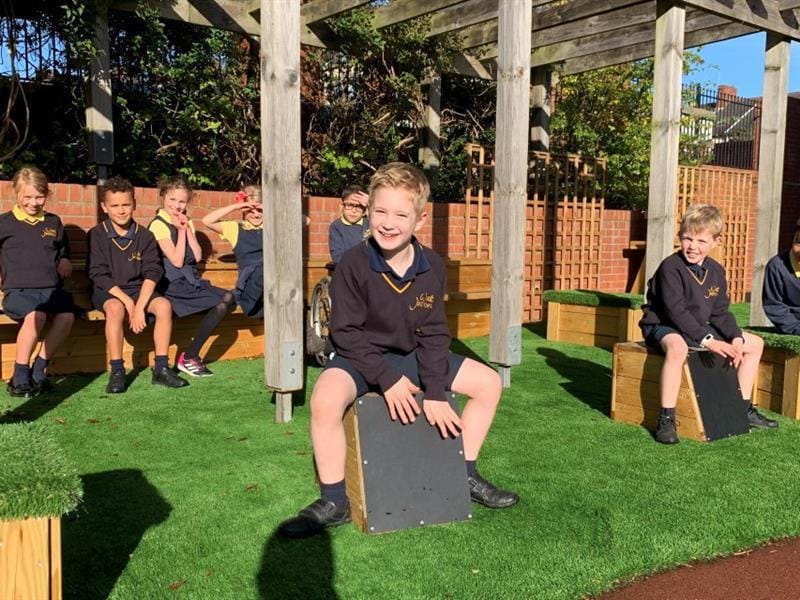
When children are outside, they can replicate sounds they hear such as splish, splash, drip, drop, swishy swashy.
Before children are introduced to grapheme- phoneme correspondence they need to listen to adults modelling oral blending.
Last words in questions and conversations can be segmented so that children begin to hear separate phonemes. For example: Would you like some m/i/l/k? Listen to the r/ai/n.
A secure understanding of letters and sounds provides children with the necessary skills that they need to read and engage with many aspects of learning.
I believe that the teaching of Phonics should be fun, interactive and weaved into many elements of continuous provision.
This blog will explore ways to increase engagement and make Phonics teaching an active, sensory learning experience both in school and at home.
S is for Sand!
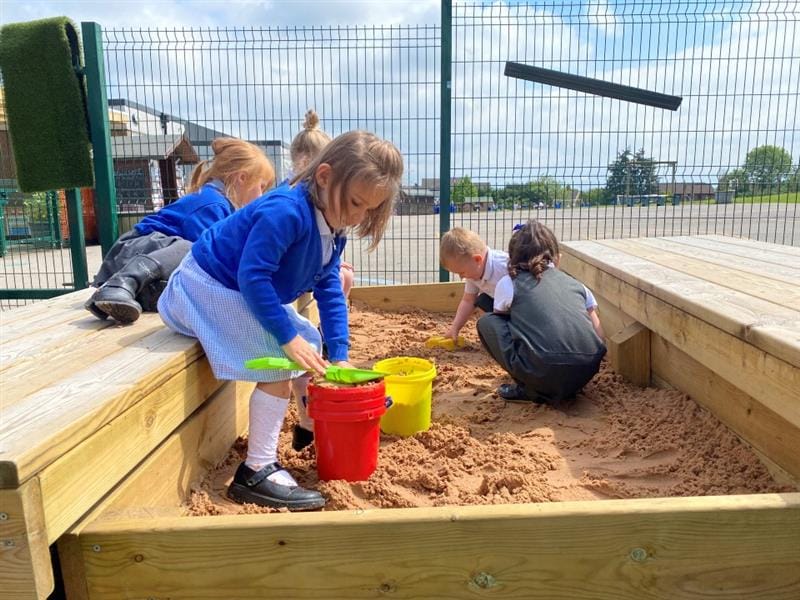
Pentagon’s Sand Box is the perfect place for developing motor skills and word recognition.
Children can be show different letters and can practice making them in the sand using a stick alongside saying the sound. They may be able to think of words containing the sound.
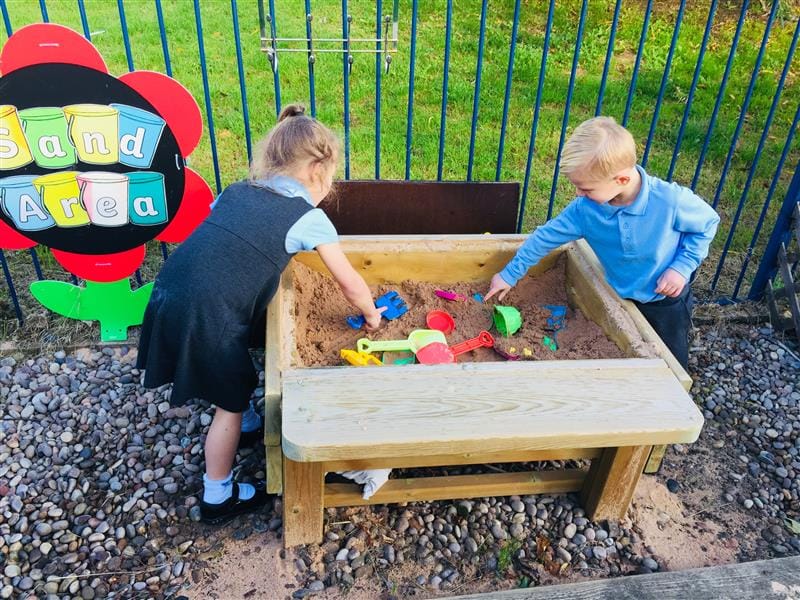
Children love digging for buried treasure! Golden coins with letter sounds taped on them can be hidden in the sand.
You could write a mixture of words some containing the ‘oi’ sound such as coin, foil, boil, point and voice and other words which do not, pupils could sort the coins into two pails.
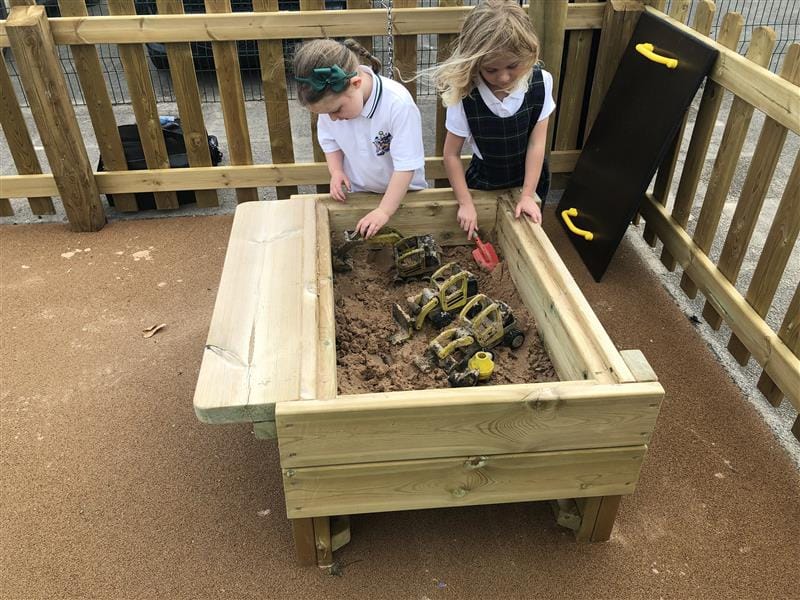
Pupils enjoy building roads, dunes and castles in the sand box. Young writers can practise writing down the sounds they hear by making small flags to identify each landmark.
W is for Water Table!
Water play is often a popular choice during free play and phonic activities can be easily added to this area.
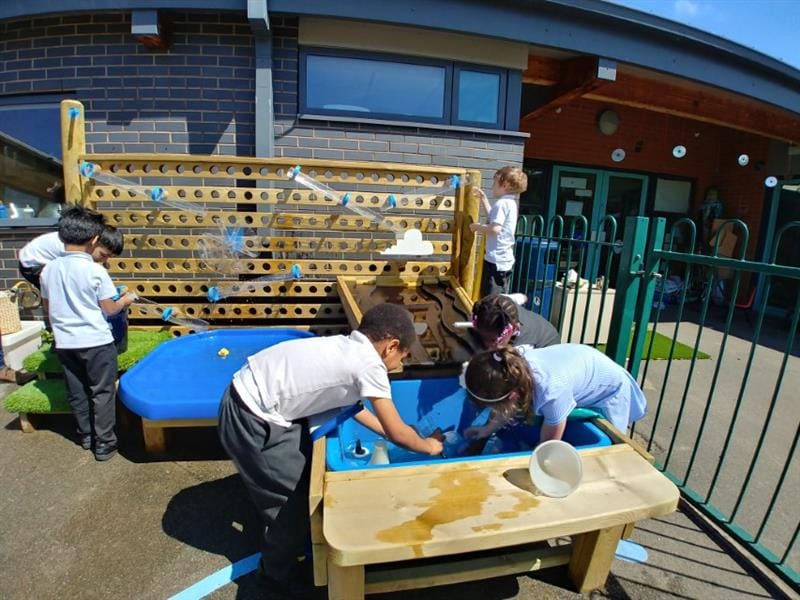
Plastic bottle tops from milk cartons are a great resource for writing letters on using permanent marker. Children will enjoy fishing out a particular letter as they say the sound.
Food colouring and fruit can be added to water trays so that children have their own lemonade stall!
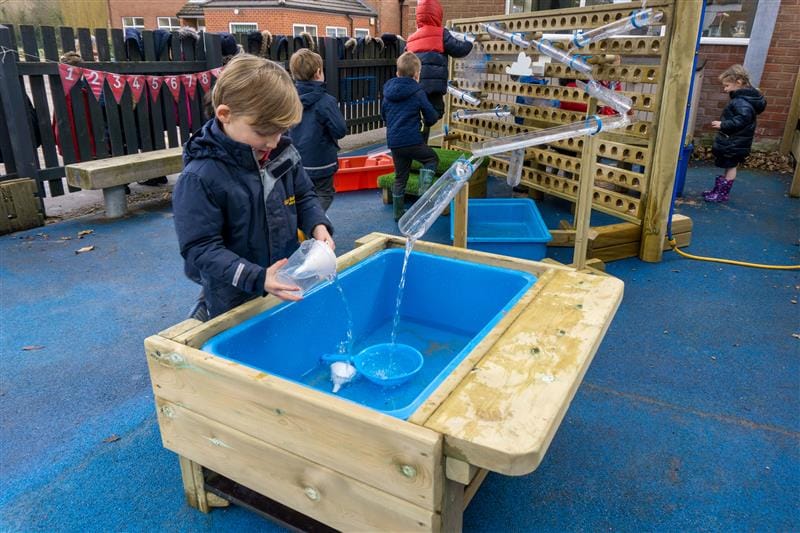
You could provide the children with a selection of plastic cups with different sounds written on them and ask pupils to only fill the cups with the sound ‘l’ for lemon on them.
Alternatively, you could provide plastic cups with different sounds/words written on them and fill each cup with different coloured water.
You could ask children to read the word mix and practise segmenting by pouring a small amount from each cup labelled m/i/x into a large jug to blend the word. Children will have great fun making their own potions!
Letters frozen in ice are always a great addition to a water table on a hot day. As the children work on ‘freeing’ the letters from the ice they are recognising sounds and shapes of the letters.
Chalk letters and words can be written on different surfaces in the outdoor area. Children can practise fine motor skills by using spray bottles to clean and remove the sounds as they say them.
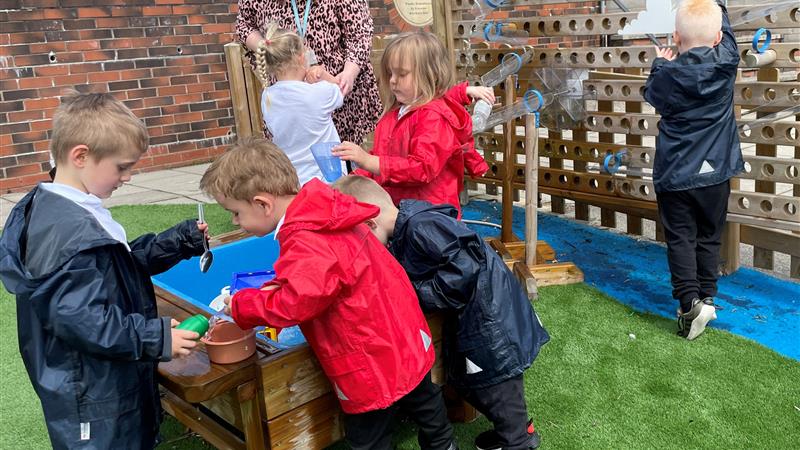
M is for Mud Kitchen!
A muffin tray is a useful resource for phonics play in a mud kitchen. Words and letters can be stuck to the bottom of the tray or inside cake cases.
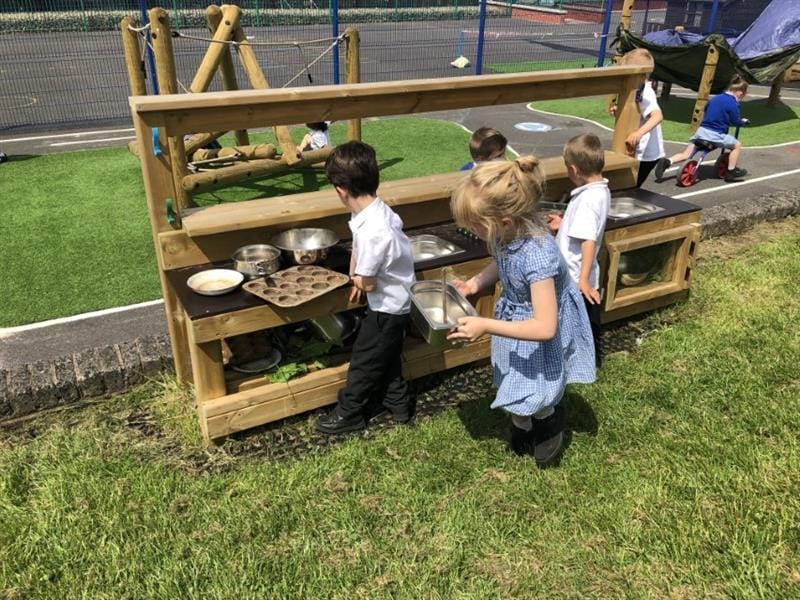
As children fill the cases they can say the sound/word. Adding various objects to a mixing bowl to create a ‘Silly Soup’ is an enjoyable activity.
Practitioners can show children a sound and ask pupils to add letters and corresponding items to their soup to mix.
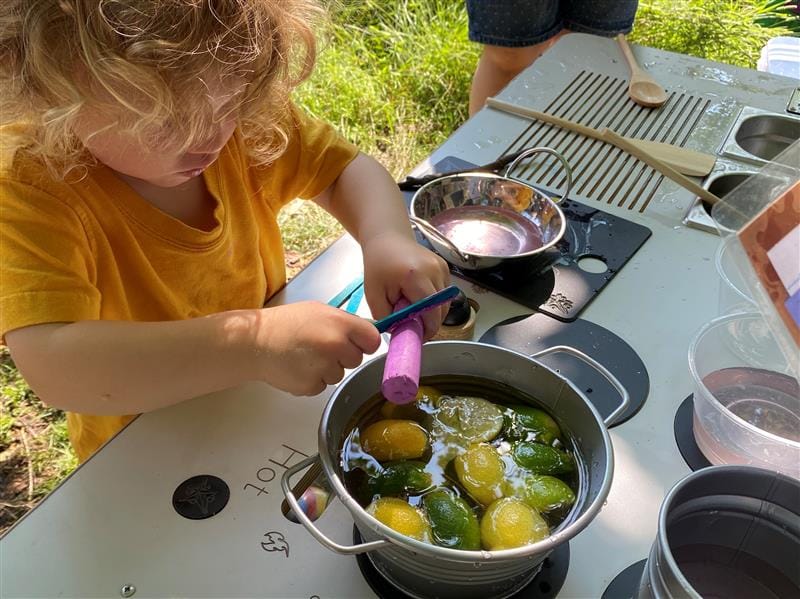
T is for Tuff Spot Table!
A tuff spot table is a fantastic resource for messy, sensory play. Plastic and wooden letters can be hidden in oobleck which is a mixture of cornflour and water which food colouring can be added to, jelly or foam made by whisking washing up liquid.
Trays can be filled with coloured rice or chickpeas and children need to dig or use paint brushes to fine words/letters. Letters can be written inside sections of an egg box and as they are filled children blend the sounds together to read each word.
Getting Creative with Phonics Teaching
Playdough is a brilliant resource for developing fine motor skills needed for writing. Children can learn how to form letters by making them from playdough and decorating with loose parts.
Wooden letters can be used to make prints in playdough which allows children to blend and segment words.
Printing is an enjoyable art activity. Letter sounds can be written on paper and you can ask children to print over certain sounds. Potato and apple printing are always a favourite and pupils will like printing with their favourite toy figures. Cotton buds can be dipped in paint and used to trace sounds which reinforces letter formation.

Invisible ink activities are always popular as well as being quick and easy to set up. Practitioners can write words/sounds in white crayon on paper. Children can paint over the letters using watercolour paints, they will be able to read the words as letters are revealed.
Phonics in the Construction Area
Letter sounds or words can be added to stones in the construction area. As children play, they can use toy diggers and trucks to pick up and transport the stones enabling them to recognise letters and words.
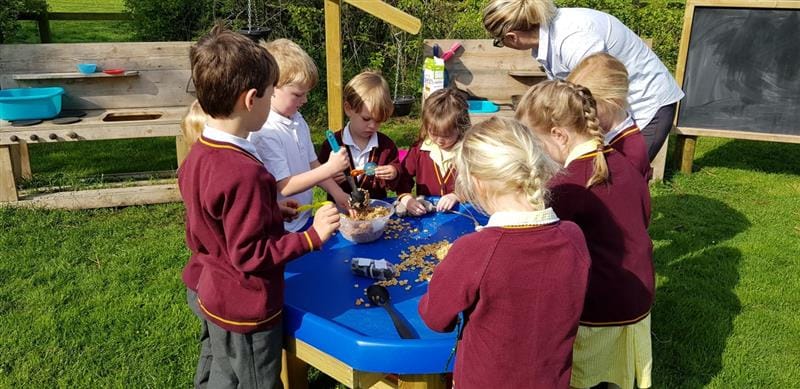
Each piece of a train track can be labelled with a different sound. This is highly effective when children are learning to blend sounds together as they will be able to physically move a train across the track pieces as they learn to read different words.
Toy blocks are a brilliant resource for teaching phonics. Words can be spelt by connecting blocks with different letter sounds written on them or you could ask pupils to build a tower by selecting all of the blocks that contain for example the ‘ai’ sound.

Outdoor Phonics
Phonics lessons certainly don’t have to be confined to whole class teaching during ‘carpet time.’ For some children they will feel more confident to communicate outside as they are able to use their ‘outside’ voice and they will become enthusiastic to share and talk.
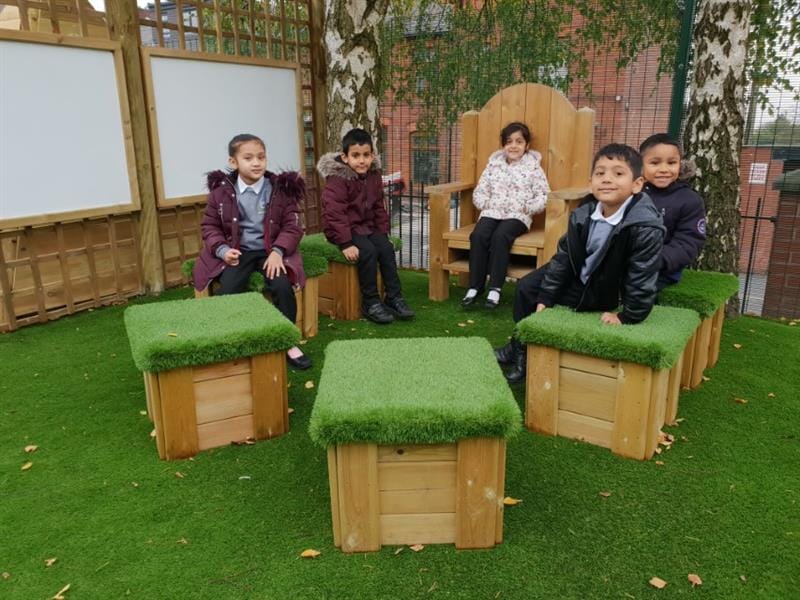
Pupils may be able to concentrate for longer periods of time when actively learning phonics in the outdoor environment.
A giant foam dice is a useful resource as you can insert different words/sounds into plastic sleeves on each side of the dice.
Children have great fun throwing and running after the dice and they can practise reading and writing sounds depending on the letters the dice lands on. Pupils could be challenged to name as many words as they can which contain a particular sound.
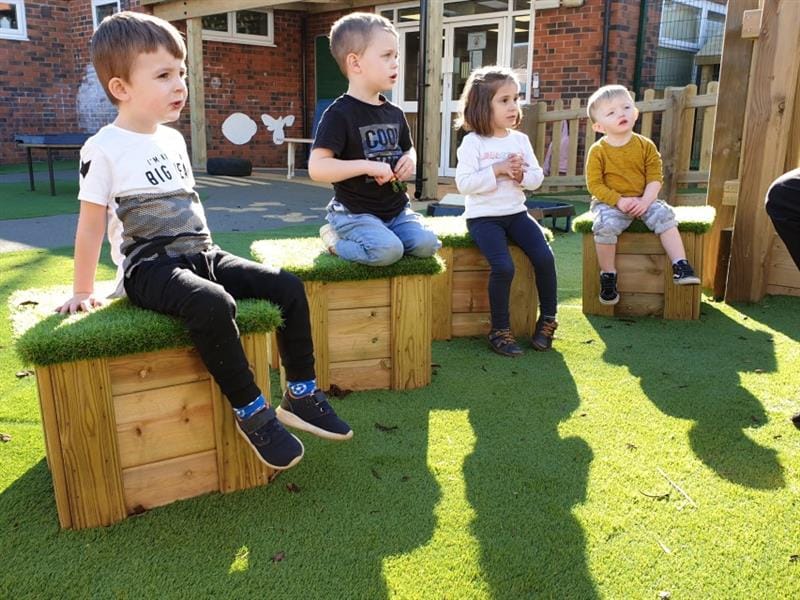
Phonics bowling works in a similar way by writing sounds/words on recycled bottles or cups and asking children to knock them down. These types of activities provide children with necessary repetition in an engaging manner.
Building upon children’s own interests helps them to develop phonics confidence. For my class of football fanatics, I set up small goals with words containing a particular sound taped to the floor which could be read as a goal was scored.
If phonic activities are woven into children’s daily play, hopefully letter recognition will become automatic and children will be able to decode new words as they read.
As children develop phonemic awareness unfamiliar words are easier for children to unravel. It is a fantastic feeling to see young children becoming confident readers as it is such a key skill in their learning journey.
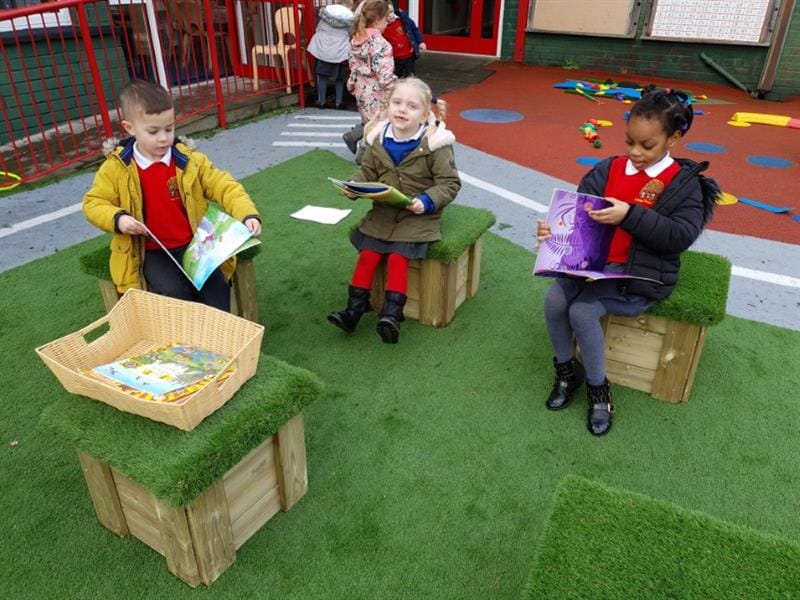
Phonics can be one of the most effective ways of teaching children to learn to read. With regular practise, children can develop reading fluency and eventually broaden their vocabulary and general knowledge.
Teaching phonics can be a fun, visual and engaging experience for children which fosters a life- long love of reading.

